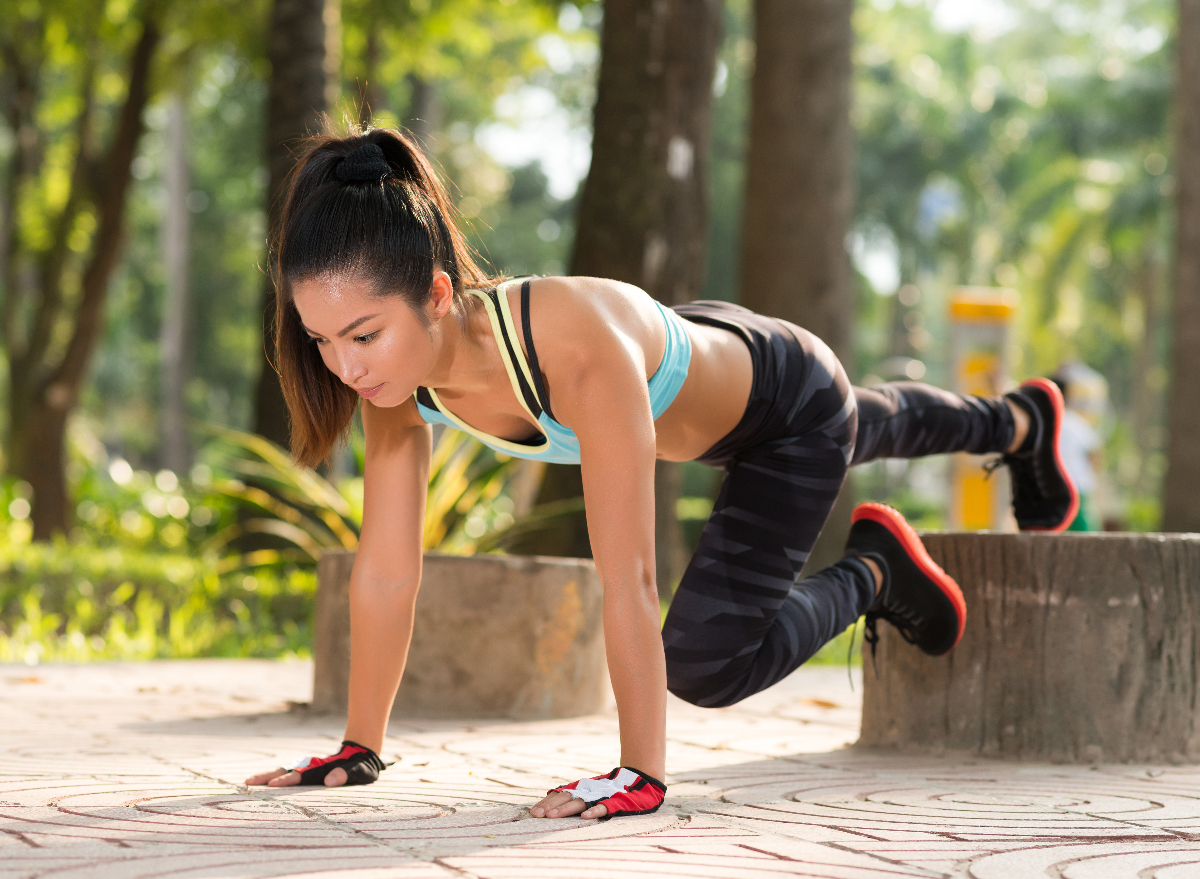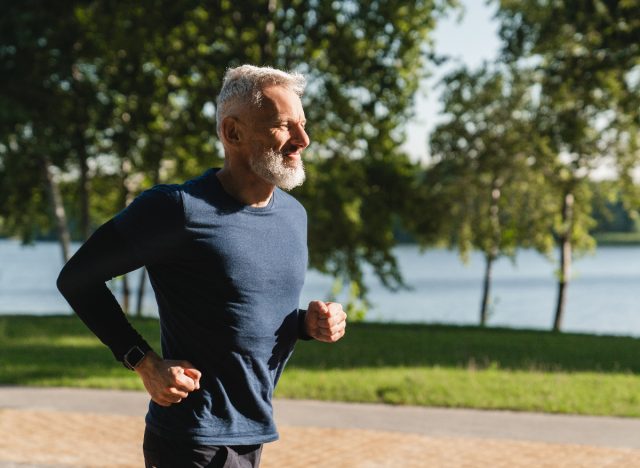'Primal Movement' Is the Biggest New Fitness Trend You've Never Heard Of

With every new year marking a clean slate, you anxiously anticipate the hottest workout trends around the corner. Whether you want to get back on track with your weight loss goals after a long break or establish an easy-to-follow routine you'll actually stick to, looking at the latest and greatest trends always serves as a stellar source of inspiration. According to a 2023 trends report by Pinterest Predicts, primal movement is making waves in the workout world, and for good reason.
The year 2023 will be all about swapping out your laptop, cellphone, and TV screens for some much-needed stretch time, according to Pinterest Predicts. "These primitive, anti-tech workouts invite people to put down their phones and prioritize posture," Pinterest explains in the report, which is so relatable if you work a desk job. Millennials and Gen X are totally here for this fitness trend, and you will be, too.
If you're wondering how you can get started with your own primal movement routine, we spoke with Scott Brown, vice president of fitness at Orangetheory, and Rachel Vaziralli, director of fitness design and Education at Orangetheory, who break things down. Keep reading to learn more, and next, check out 5 Daily Exercises To Improve Muscular Endurance as You Age.
What is primal movement?

Primal movement patterns, also referred to as functional or foundational movement patterns, are the basic movements you do as part of your daily routine. Brown and Vaziralli explain to Eat This, Not That!, "They have always been and will always be the foundational ways we move. Understanding and harnessing these patterns into effective training is a great way to progress toward building and maintaining improved physical function for a longer, more active, and vibrant life."
These "core movements" you utilize daily include lunging, squatting, hinging, pulling, pushing, rotating, and gaiting. For instance, you'll squat to get up from the couch or your desk chair; lunge forward to grab your phone, a magazine, or a piece of fruit from the basket; pull open your car door; and more.
"Theoretically, if you practice and repeat these movements with intention and balance through your training, it may transfer into better everyday movement, ensure a longer health span and independence, and may even reduce the risk of various injuries," Brown and Vaziralli say.
Here's how you can use primal movement in your workouts.
"Movements are a beautifully orchestrated series of neuromuscular events," Brown and Vaziralli explain, adding, "The coordination of these events can be fine-tuned with practice, or they can degrade through lack of utilization. The trick is getting an optimal amount of these patterns, and for folks starting on a new training journey, determining the best ways to introduce and progress the various movements."
At Orangetheory, the fitness pros curate each workout to incorporate all of these key movement patterns. The team typically refers to their 60-minute workout as "the ultimate multivitamin for physical health." The routine features primal movement patterns, such as gait in jogging, running, or walking, along with pulling by using the water rower.
And it doesn't stop there. Proper guidance is key when correctly performing primal movement patterns in workouts. "The most important aspect of primal patterns at Orangetheory is the coach. The coach is there to help customize and personalize the workouts, especially on the weight floor. This allows us to help our members with movement options to ensure they are being performed correctly or provided with alternative options as needed," Brown and Vaziralli tell us.
If your fitness goal is efficiency and getting the most bang for your buck, look no further than primal movement.

Primal patterns are usually always "multi-joint compound movements," which means the motion calls for more than one joint to perform it, along with a certain amount of coordination. "This typically means a higher percentage of muscles being recruited, involving one or more large muscle groups, promoting more energy expenditure and potentially applying a higher and more impactful adaptive stimulus per time spent," Brown and Vaziralli explain.
That's not to say you should totally nix single-joint or isolation exercises. Although they don't fall under the "primal movement" category, they can still be performed in conjunction with primal patterns for an all-around productive workout. "There are many great tools in the functional training toolbox, it is all about how and when you use them," Brown and Vaziralli add.









